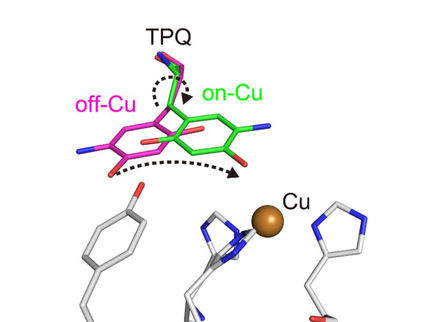Popping cells surprise living circuits creators
Under the microscope, the bacteria start dividing normally, two cells become four and then eight and so on. But then individual cells begin "popping," like circus balloons being struck by darts. This phenomenon, which surprised the Duke University bioengineers who captured it on video, turns out to be an example of a more generalized occurrence that must be considered by scientists creating living, synthetic circuits out of bacteria. Even when given the same orders, no two cells will behave the same. The researchers believe this accidental finding of a circuit they call "ePop" can help increase the efficiency and power of future synthetic biology circuits.
Synthetic circuits are created by genetically altering colonies of bacteria to produce a myriad of useful proteins, enzymes or chemicals in a coordinated way. The circuits can even be reprogrammed to deliver different types of drugs or to selectively kill cancer cells. Scientists in this emerging field of synthetic biology have operated under the assumption that when identical snippets of engineered DNA - known as plasmids - are inserted into cells, each cell will respond in the same way.
"In the past, synthetic biologists have often assumed that the components of the circuit would act in a predictable fashion every time and that the cells carrying the circuit would just serve as a passive reactor," said Lingchong You, an assistant professor of biomedical engineering and member of Duke's Institute for Genome Sciences & Policy. "In essence, they have taken a circuit-centric view for the design and optimization process. This notion is helpful in making the design process more convenient."
But the cells in this study unexpectedly began popping when the colony reached a certain density of cells because of an unintended consequence of introducing plasmids.
Biochemistry graduate student Philippe Marguet said the research team looked at many factors to try to explain how the bacteria sensed the size of their colonies. "In the end, it turns out that the (number of copies of) plasmid increases with cell density. This is the critical link that enables the cells to sense their density and to commit suicide at sufficiently high densities."
"We ran computer models and experiments to show that this is indeed the case," Marguet said. "Our results underscore the importance of the amount of plasmids and the potential impact of hidden interactions on the behavior of engineered gene circuits."
The results of the team's experiments were published in the journal PLoS One .
Researchers can reprogram populations of genetically altered bacteria to direct their actions in much the same way that a computer program directs a computer. In this analogy, the plasmids are the software, the cell the computer. One of these plasmids tells cells to commit suicide if the number of cells in a population gets too high.
However, in the ePop circuit, which made use of the common Escherichia coli (E. coli) bacteria, the cell death, or popping, took place without the suicide gene. The researchers believe that when the plasmid is inserted into bacteria, it can be expressed at different levels in different cells. When over-expressed in a particular cell, it leads to the cell's demise. When enough of the cells are so affected, the population of cells in the colony decreases.
"Perhaps the confluence of the conditions for significant plasmid amplification was not seen in previous experiments," You said. "In this regard, ePop can be valuable as a probe of cell physiology to find out what environmental and genetic conditions lead to this amplification. As a probe, ePop has the advantage of being easily observable and highly sensitive and it has the ability to provide new information on complex interactions between the plasmid and the host cell."
The goal, You said, is to get to the point where scientists have a complete understanding of each component of a circuit, so that when a new plasmid is added, all of its effects can be observed.


























































